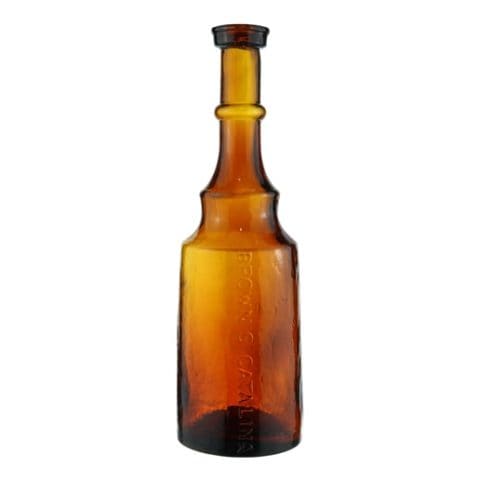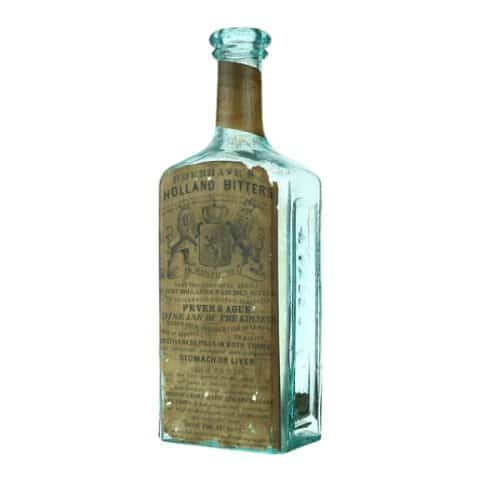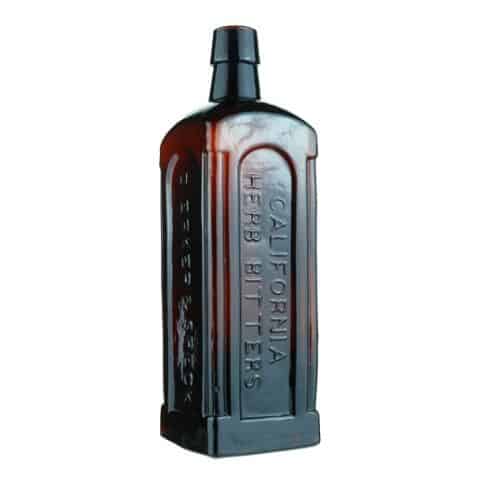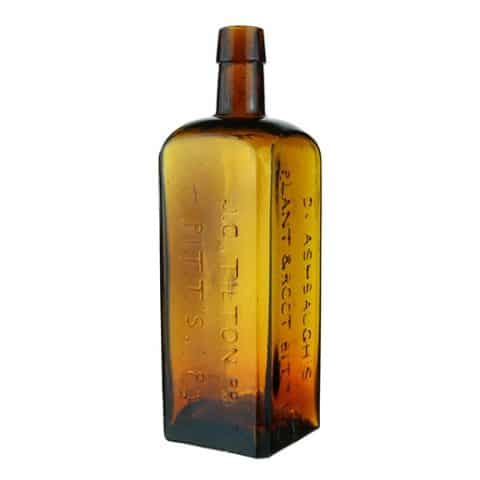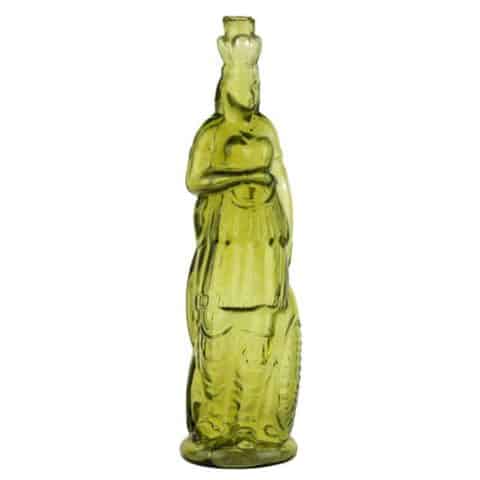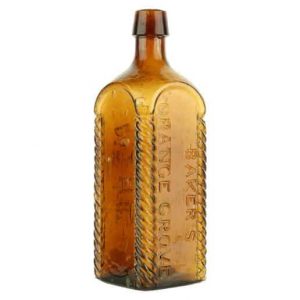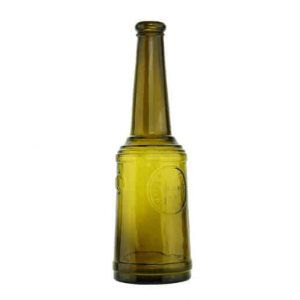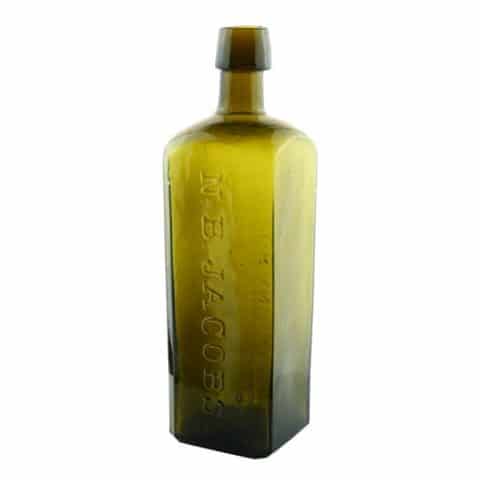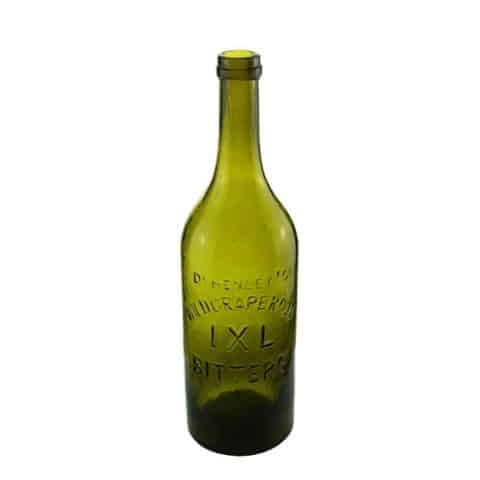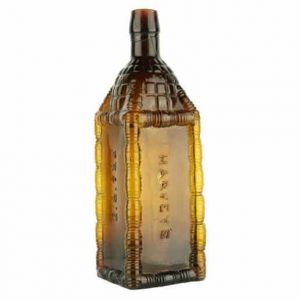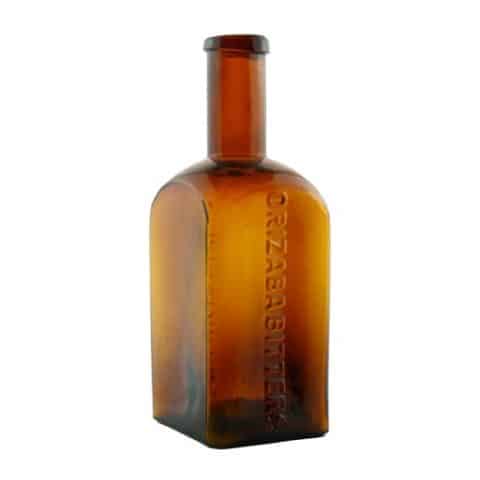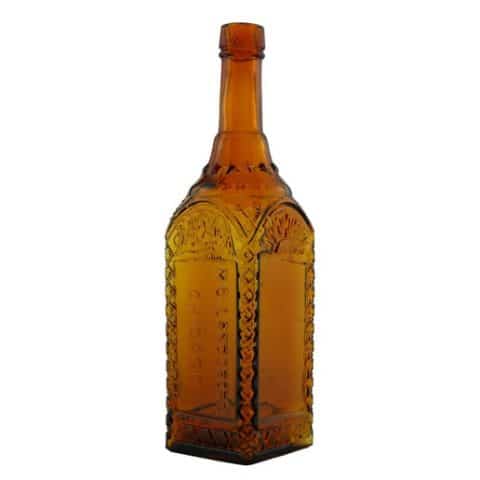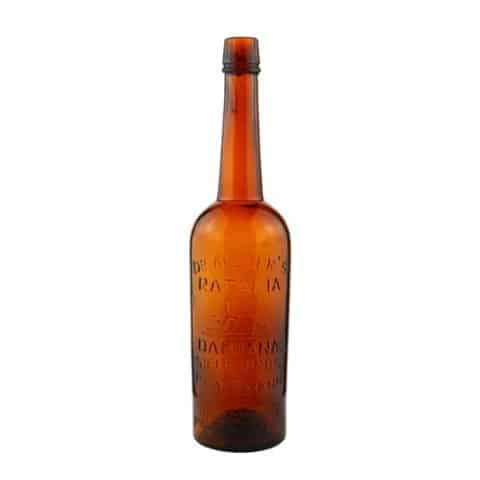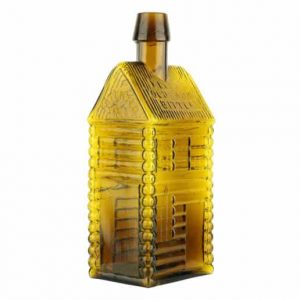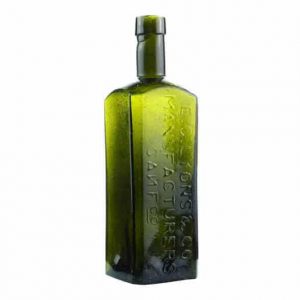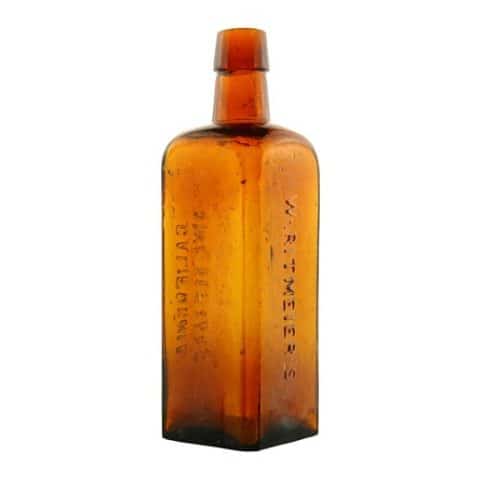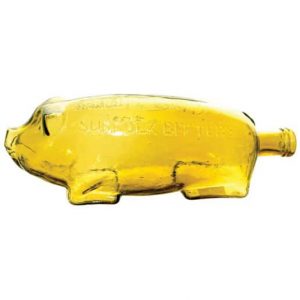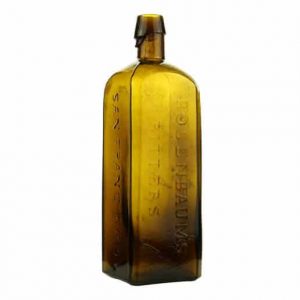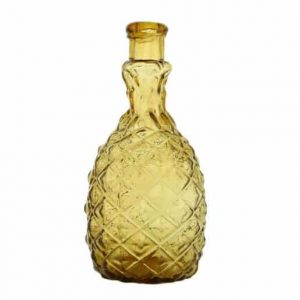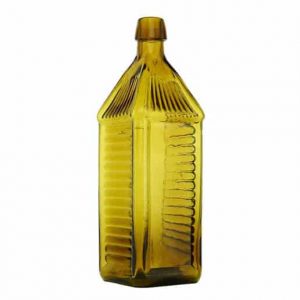California Bitters
California Bitters
Manufactured Only By J. G. FRISCH.
San Francisco
C 12
John G. Frisch, San Francisco, California
Amber Tapered Rectangle
Provenance: Richard T. Siri Collection

The California Bitters bottle is certainly at or near the very top of the “Best of the West” category and we are proud to have the only known complete example in the Bitters Gallery. It exhibits extreme rarity, unique design style, and falls within that rarified production time of the 1850s. The bitters were manufactured by J. G. Frisch who was the father-in-law of better known Thomas T. Taylor.
See our Virtual Museum Spirits Gallery examples of the Nevada Territory Thos. Taylor & Co. Importers, Virginia N. sixth and our Thos. Taylor & Co. Importers, Virginia, N. fifth.
One whole specimen of a California Bitters was dug in Napa, California in 1975 and one broken specimen exists. Both are represented in the museum. The bottles are tapered rectangles that were made of amber glass. They have a long tapered mouth with a ring. The bottle has a metallic pontil mark. Broken specimens were found in Santa Cruz and San Francisco, California.
John G. Frisch is reported to have been born in 1802 in Hamburg, Germany. He most likely immigrated to America through New York and headed west where he received his Naturalization and Citizenship on August 21, 1857, in San Francisco. Frisch’s claim to bitters fame was that he was the sole manufacturer and proprietor of the popular Dr. Hufeland’s Celebrated Swiss Stomach Bitters. He filed a label Trade Mark No. 40, in 1864 with the Secretary of State of California.

In 1861, John G. Frisch would file a Copartnership Notice that a new firm was established to replace a previous partnership between J. G. Frisch and William Reichel. The new firm was called J. G. Frisch & Co. for the purpose of continuing the Wine and Liquor business at 314 Clay Street. The new partners were J. G. Frisch, William Reichel, and Thomas Taylor at 413 and 415 Clay Street in San Francisco. Basically, Thomas Taylor was introduced into the mix. Thomas Taylor began his liquor career in San Francisco during the 1850s amid the California Gold Rush. Taylor was born in Hamburg, Germany in 1831. He came to California, first working in Sacramento, then in San Francisco to mine the gold of pockets, which poured open as the whiskey flowed. By 1858, he had started his own wine and liquor business at 109 Clay Street.
Discoveries of massive amounts of silver and gold in the mountains east of the Sierra Nevada made the news in western newspapers in 1859. George Hearst and others built several mighty mining companies that reaped precious metals from the ground. The Gould & Curry and Ophir mines were among the first of the very rich mines that produced millions right away, easily rendering Virginia City the largest and richest ore deposit yet discovered in America.
Taylor and Frisch came under the Washoe spell, and took the tough, rugged trip to Virginia City in the early 1860s, possibly as early as 1862. Frisch and Taylor undoubtedly recognized the need for a wholesale liquor business in burgeoning Virginia City, and the potential success if they could keep the merchants supplied. This was not an easy task for a whiskey merchant, since importing barrels and kegs of whiskey meant long, difficult hauls over the Placerville-Genoa wagon road.
By 1863, Virginia City was rivaling San Francisco as the financial center of the west. It was certainly the western mining center, and much of the business transacted in western mining camps went through Virginia City one way or another, including whiskey. Taylor and Frisch were also keenly aware of the construction of the Central Pacific Railroad, and its planned completion into western Nevada in 1868. The rail line would greatly facilitate the shipping of whiskey, and those that had their business in place when the railroad was completed stood to profit the most. Taylor and Frisch made sure they were ready.
John Frisch bought a lot and building in Virginia City from Adam Gerheuser for $2,500 in April, 1863. The lot was centrally located in town between B and C Streets, thirty feet wide and 125 feet deep. A two story brick building was later built on the property to house their liquor business. Frisch began the setup of the Virginia City business while Taylor and Reichel ran the San Francisco wholesale liquor business.
Unfortunately, John G. Frisch died in San Francisco on December 26, 1865. Thomas Taylor and various partners would then carry on the business including the manufacture and sales of Dr. Hufeland’s Bitters.

The Carlyn Ring and W.C. Ham listing in Bitters Bottles is as follows:

C 12 CALIFORNIA BITTERS // MANUFACTURED ONLY / BY // J.G. FRISCH. // SAN FRANCISCO // sp //
10 x 2 ¾ (8 ½ )
Tapered rectangle, Amber, LTCR, Metallic pontil mark, 1 sp, Extremely rare.
Whole specimen dug in Napa, California in 1975. Broken open pontil specimens found in Santa Cruz and San Francisco.
One of the “Top” Western bitters.
Primary Image: California Bitters bottle imaged by the FOHBC Virtual Museum midwest studio by Alan DeMaison.
Support Image: Auction Lot 71: CALIFORNIA BITTERS MANUFACTURED BY J.G. FRISCH SAN FRANCISCO 1858 Applied top with iron pontil. Here’s an interesting bottle, if somewhat incomplete. We call it the three-tone, three-side. To our knowledge there are only two examples found to date, the one in Richard Siri’s collection, and this partial example. A product of the Huffland’s and the only bottle with the Frisch name embossed. The company was later sold to N. VanBergen. Frisch was one of the earliest wholesale liquor dealers in San Francisco. With just the two or three known examples, only one is not damaged. Another has an open pontil, which is interesting. These bottles are often referred to as the most desirable western bitters and, if made in the west, certainly one of the earliest. This example was found by Elmer Smith, but we are not exactly sure where. It is shown in the western bitters book. A unique bottle in an unusual shape with loads of terrific history. When turned just right, it almost seems like a whole bottle, almost. No Grade. – Jeff Wichmann, American Bottle Auctions, Auction 70, Part 2 of the Don Dwyer Collection
Support Image: Broken example studio shot provided by Warren Friedrich
Support: Reference to Bitters Bottles by Carlyn Ring and W. C. Ham. Use of bottle illustration courtesy of Bill Ham.
Support: Reference to Western Whiskey Gazette, Thomas Taylor by Bruce Silva.
Support Image: Label for a Dr. Hufeland’s Celebrated Swiss Stomach Bitters from the Eric McGuire collection.
Support Image: Broken example in hand photograph from the John Feldmann collection.
Support: Reference to California Bitters Manufactured only by J. G. Frisch San Francisco
Join the FOHBC: The Virtual Museum is a project of the Federation of Historical Bottle Collectors (FOHBC). To become a member.






